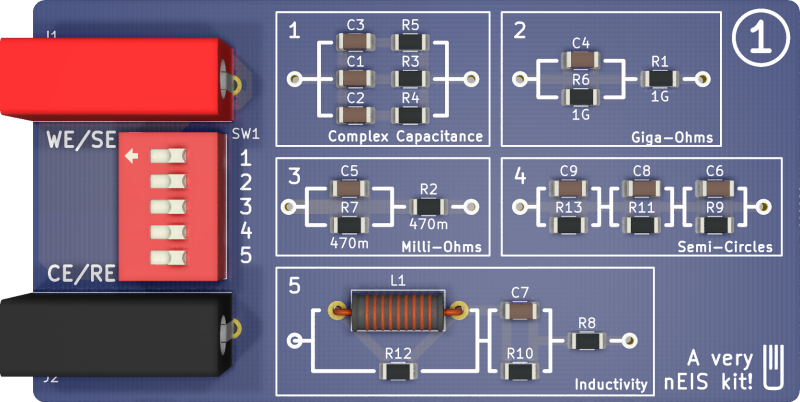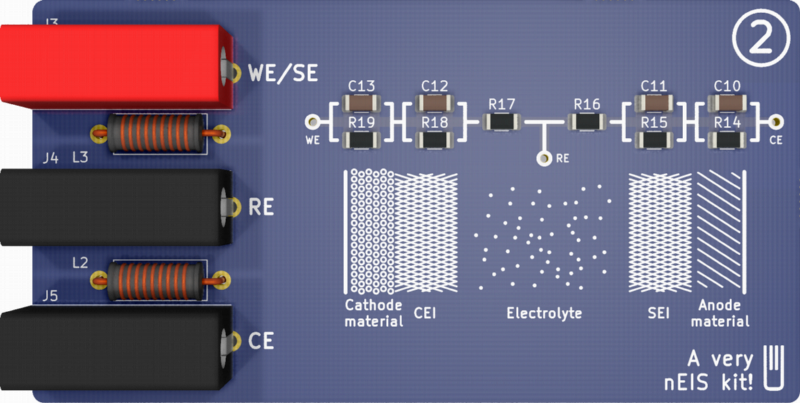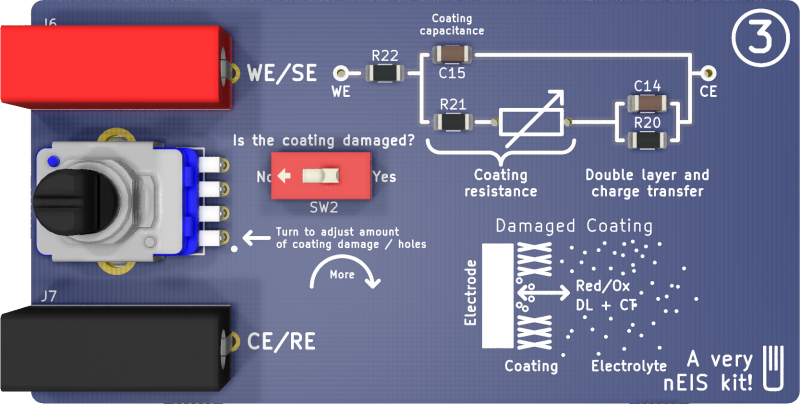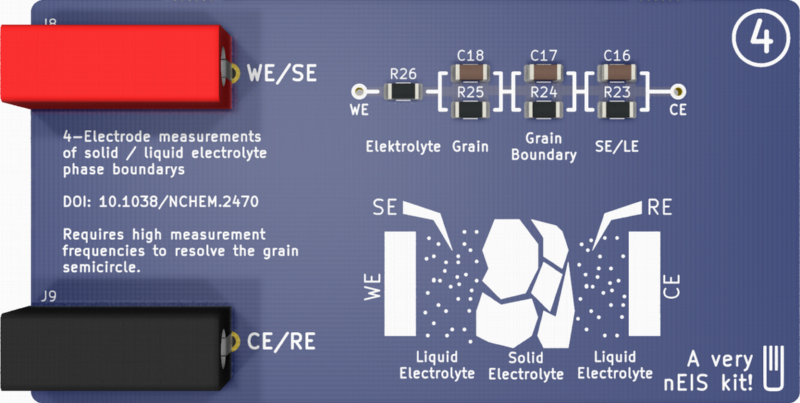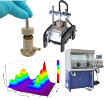More than a Test Box.
In the life of each electrochemist working with impedance spectroscopy, there comes a time when you just don't think that your analyser is doing what it is supposed to.
Here is where test boxes come in, that are built on stable classical electrical elements like resistors and capacitors. You can measure these test boxes to see if the analyser produces the expected spectrum. But what if the test box you have is not anywhere near the system that you are studying? What if it has nothing in common with any real world examples?
Enter: the nEIS Kit!
The nEIS Kit is not just a boring test box. Instead, it offers a wide variety of experiments that simulate common measurement task in electrochemical impedance spectroscopy like measuring very low or high impedances, three-electrode setups or systems with high frequency requirements.
It contains interactive elements that allow you to not only understand the systems but also to learn much about analyzer settings like amplitude or integration times, noise shielding, cable inductivity and capacitance and more.
Teaching EIS.
Impedance Spectroscopy is a complicated technique and learning to use it effectively is a challenging task.
In the nEIS Kit you find intuitive examples for common measurement together with reference sheets that give hints and examples. All components have specified values, allowing you to analyze your spectra to find out if the measured values match what's on the board.
Knowing the expected outcome allows you to fine-tune your EIS device settings because you can always objectively judge if a change improved the result.
Board 1: Multiple experiments.
Board 1 is comprised of 5 different experiments. These range from illustrative examples to measurement challenges.
The active experiment is selected via an on-board switch.
- Experiment 1: Illustrates the usefulness of different transfer functions
- Experiment 2: Challenges you to measure large (giga-Ohms) impedances accurately.
- Experiment 3: Challenges you to measure small (milli-Ohms) impedances accurately.
- Experiment 4: Results in a nice example spectrum of three impedance semi-circles.
- Experiment 5: Shows the effect that inductivity can have on a spectrum.
Board 2: Three-electrode battery measurement.
Board 2 illustrates the usefulness of three electrode measurements in battery measurements.
Find out, how a reference electrode helps in separating contributions from the two battery interfaces and how the two- and three-electrode experiments fit together.
Board 3: Impedance spectra of coatings.
Board 3 demonstrates typical impedance spectra of metals covered with a dielectric coating, like lacquer.
The coatings may get damaged which leads to corrosion. This can be simulated on the board by enabling or disabling damage to the coating via a switch. The amount of damage can be varied by turning a potentiometer, showing the transition between minimal and maximal damage.
Board 4: The need for high-frequencies.
Board 3 is derived from a four-electrode experiment on liquid/solid interfaces, that show different charge-transport paths.
The nature of these processes causes contribution to the very high frequency domain of a spectrum. Can you measure accurately up to and above 10 MHz?





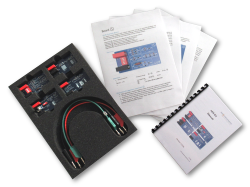
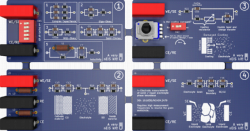
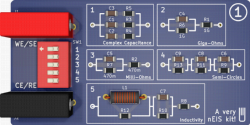
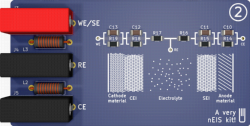
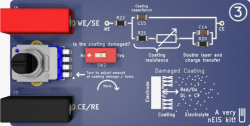
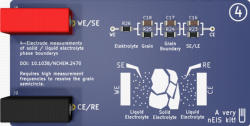






 Add to Request
Add to Request